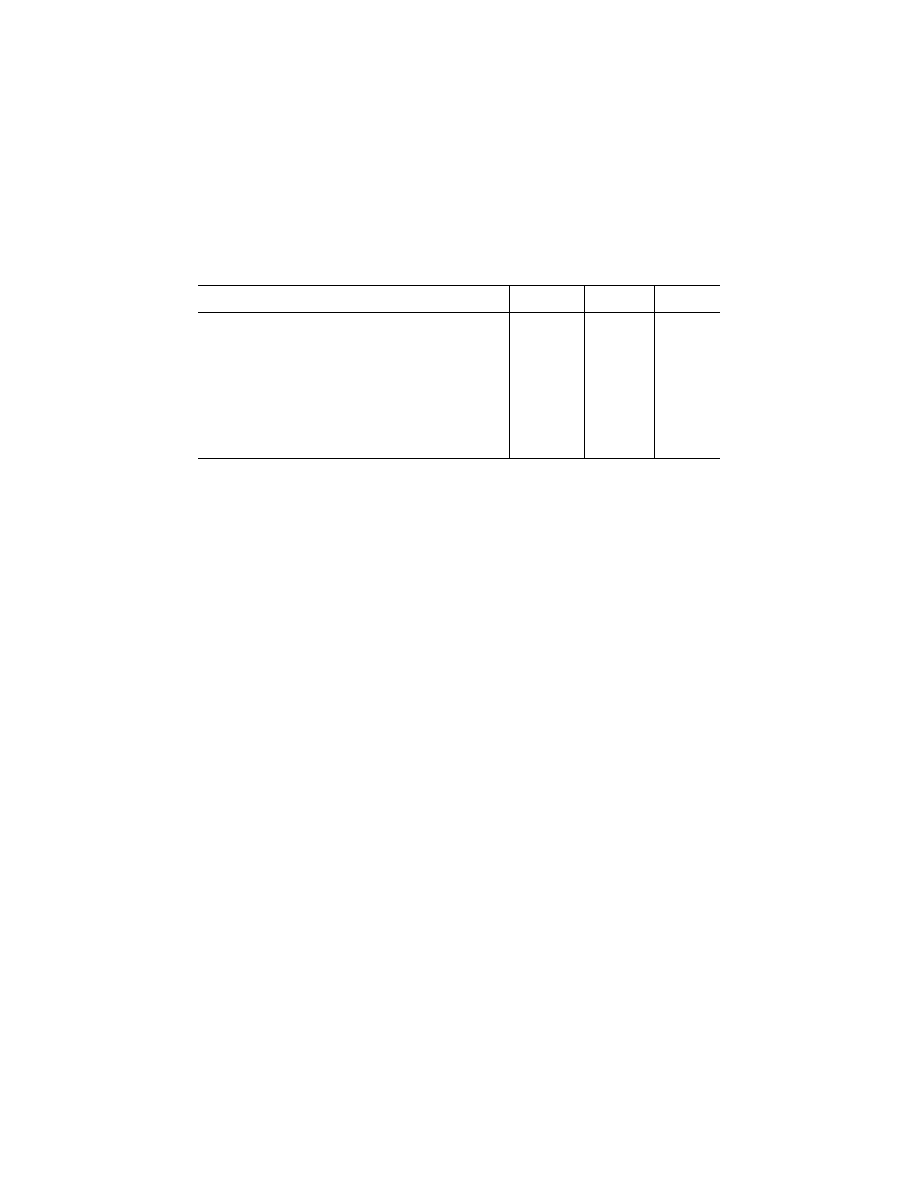
725
Federal Aviation Administration, DOT
§ 33.77
times at the defined conditions in para-
graphs (e)(2)(iii)(A) through (H) of this
section.
(A) Ingestion.
(B) Followed by 1 minute without
power lever movement.
(C) Followed by 2 minutes at 30–35
percent maximum rated takeoff power
or thrust. Power lever movement in
this condition is unlimited.
(D) Followed by 1 minute with power
or thrust increased from that set in
paragraph (e)(2)(iii)(C) of this section,
by 5–10 percent maximum rated takeoff
power or thrust.
(E) Followed by 2 minutes with power
or thrust reduced from that set in
paragraph (e)(2)(iii)(D) of this section,
by 5–10 percent maximum rated takeoff
power or thrust.
(F) Followed by 1 minute minimum
at ground idle.
(G) Followed by engine shutdown.
(H) Power lever movement between
each condition must be 10 seconds or
less, except that any power lever move-
ments are allowed within the time pe-
riod of paragraph (e)(2)(iii)(C) of this
section.
(3)
Results of exceeding engine-oper-
ating limits. Applicants must show that
an unsafe condition will not result if
any engine-operating limit is exceeded
during the run-on period.
(4)
Combining tests. The climb flock-
ing bird test of paragraph (e)(1) of this
section may be combined with the me-
dium flocking bird test of paragraph (c)
of this section, if the climb first stage
rotor speed calculated in paragraph
(e)(1) of this section is within 3 percent
of the first stage rotor speed required
by paragraph (c)(1) of this section. As
used in this paragraph (e)(4), ‘‘com-
bined’’ means that, instead of sepa-
rately conducting the tests specified in
paragraphs (c) and (e)(1) of this section,
the test conducted under paragraph (c)
of this section satisfies the require-
ments of paragraph (e) of this section if
the bird aimed at the core of the engine
meets the bird ingestion speed criteria
of paragraph (e)(1)(i)(C) of this section.
[Doc. No. FAA–1998–4815, 65 FR 55854, Sept.
14, 2000, as amended by Amdt. 33–20, 68 FR
75391, Dec. 31, 2003; Amdt. 33–24, 72 FR 50868,
Sept. 4, 2007; Amdt. 33–23, 72 FR 58974, Oct. 17,
2007; Amdt. 33–36, 88 FR 19810, Apr. 4, 2023]
§ 33.77
Foreign object ingestion—ice.
(a) Compliance with the require-
ments of this section must be dem-
onstrated by engine ice ingestion test
or by validated analysis showing
equivalence of other means for dem-
onstrating soft body damage tolerance.
(b) [Reserved]
(c) Ingestion of ice under the condi-
tions of this section may not—
(1) Cause an immediate or ultimate
unacceptable sustained power or thrust
loss; or
(2) Require the engine to be shut-
down.
(d) For an engine that incorporates a
protection device, compliance with this
section need not be demonstrated with
respect to ice formed forward of the
protection device if it is shown that—
(1) Such ice is of a size that will not
pass through the protective device;
(2) The protective device will with-
stand the impact of the ice; and
(3) The ice stopped by the protective
device will not obstruct the flow of in-
duction air into the engine with a re-
sultant sustained reduction in power or
thrust greater than those values de-
fined by paragraph (c) of this section.
(e) Compliance with the require-
ments of this section must be dem-
onstrated by engine ice ingestion test
under the following ingestion condi-
tions or by validated analysis showing
equivalence of other means for dem-
onstrating soft body damage tolerance.
(1) The minimum ice quantity and di-
mensions will be established by the en-
gine size as defined in Table 1 of this
section.
(2) The ingested ice dimensions are
determined by linear interpolation be-
tween table values, and are based on
the actual engine’s inlet hilite area.
(3) The ingestion velocity will simu-
late ice from the inlet being sucked
into the engine.
(4) Engine operation will be at the
maximum cruise power or thrust un-
less lower power is more critical.
VerDate Sep<11>2014
09:06 Jun 28, 2024
Jkt 262046
PO 00000
Frm 00735
Fmt 8010
Sfmt 8010
Y:\SGML\262046.XXX
262046
jspears on DSK121TN23PROD with CFR

726
14 CFR Ch. I (1–1–24 Edition)
§ 33.78
T
ABLE
1—M
INIMUM
I
CE
S
LAB
D
IMENSIONS
B
ASED ON
E
NGINE
I
NLET
S
IZE
Engine Inlet Hilite area
(sq. inch)
Thickness
(inch)
Width
(inch)
Length
(inch)
0 .......................................................................................................................
0 .25 0
3.6
80 .....................................................................................................................
0 .25 6
3.6
300 ...................................................................................................................
0 .25 12 3.6
700 ...................................................................................................................
0 .25 12 4.8
2800 .................................................................................................................
0 .35 12 8.5
5000 .................................................................................................................
0 .43 12
11.0
7000 .................................................................................................................
0 .50 12
12.7
7900 .................................................................................................................
0 .50 12
13.4
9500 .................................................................................................................
0 .50 12
14.6
11300 ...............................................................................................................
0 .50 12
15.9
13300 ...............................................................................................................
0 .50 12
17.1
16500 ...............................................................................................................
0 .5 12
18.9
20000 ...............................................................................................................
0 .5 12
20.0
[Doc. No. 16919, 49 FR 6852, Feb. 23, 1984, as
amended by Amdt. 33–19, 63 FR 14798, Mar. 26,
1998; 63 FR 53278, Oct. 5, 1998; Amdt. 33–20, 65
FR 55856, Sept. 14, 2000; Amdt. 33–34, 79 FR
65537, Nov. 4, 2014]
§ 33.78
Rain and hail ingestion.
(a)
All engines. (1) The ingestion of
large hailstones (0.8 to 0.9 specific grav-
ity) at the maximum true air speed, up
to 15,000 feet (4,500 meters), associated
with a representative aircraft oper-
ating in rough air, with the engine at
maximum continuous power, may not
cause unacceptable mechanical damage
or unacceptable power or thrust loss
after the ingestion, or require the en-
gine to be shut down. One-half the
number of hailstones shall be aimed
randomly over the inlet face area and
the other half aimed at the critical
inlet face area. The hailstones shall be
ingested in a rapid sequence to simu-
late a hailstone encounter and the
number and size of the hailstones shall
be determined as follows:
(i) One 1-inch (25 millimeters) diame-
ter hailstone for engines with inlet
areas of not more than 100 square
inches (0.0645 square meters).
(ii) One 1-inch (25 millimeters) di-
ameter and one 2-inch (50 millimeters)
diameter hailstone for each 150 square
inches (0.0968 square meters) of inlet
area, or fraction thereof, for engines
with inlet areas of more than 100
square inches (0.0645 square meters).
(2) In addition to complying with
paragraph (a)(1) of this section and ex-
cept as provided in paragraph (b) of
this section, it must be shown that
each engine is capable of acceptable op-
eration throughout its specified oper-
ating envelope when subjected to sud-
den encounters with the certification
standard concentrations of rain and
hail, as defined in appendix B to this
part. Acceptable engine operation pre-
cludes flameout, run down, continued
or non-recoverable surge or stall, or
loss of acceleration and deceleration
capability, during any three minute
continuous period in rain and during
any 30 second continuous period in
hail. It must also be shown after the
ingestion that there is no unacceptable
mechanical damage, unacceptable
power or thrust loss, or other adverse
engine anomalies.
(b)
Engines for rotorcraft. As an alter-
native to the requirements specified in
paragraph (a)(2) of this section, for
rotorcraft turbine engines only, it
must be shown that each engine is ca-
pable of acceptable operation during
and after the ingestion of rain with an
overall ratio of water droplet flow to
airflow, by weight, with a uniform dis-
tribution at the inlet plane, of at least
four percent. Acceptable engine oper-
ation precludes flameout, run down,
continued or non-recoverable surge or
stall, or loss of acceleration and decel-
eration capability. It must also be
shown after the ingestion that there is
no unacceptable mechanical damage,
unacceptable power loss, or other ad-
verse engine anomalies. The rain inges-
tion must occur under the following
static ground level conditions:
(1) A normal stabilization period at
take-off power without rain ingestion,
followed immediately by the suddenly
commencing ingestion of rain for three
minutes at takeoff power, then
VerDate Sep<11>2014
09:06 Jun 28, 2024
Jkt 262046
PO 00000
Frm 00736
Fmt 8010
Sfmt 8010
Y:\SGML\262046.XXX
262046
jspears on DSK121TN23PROD with CFR

